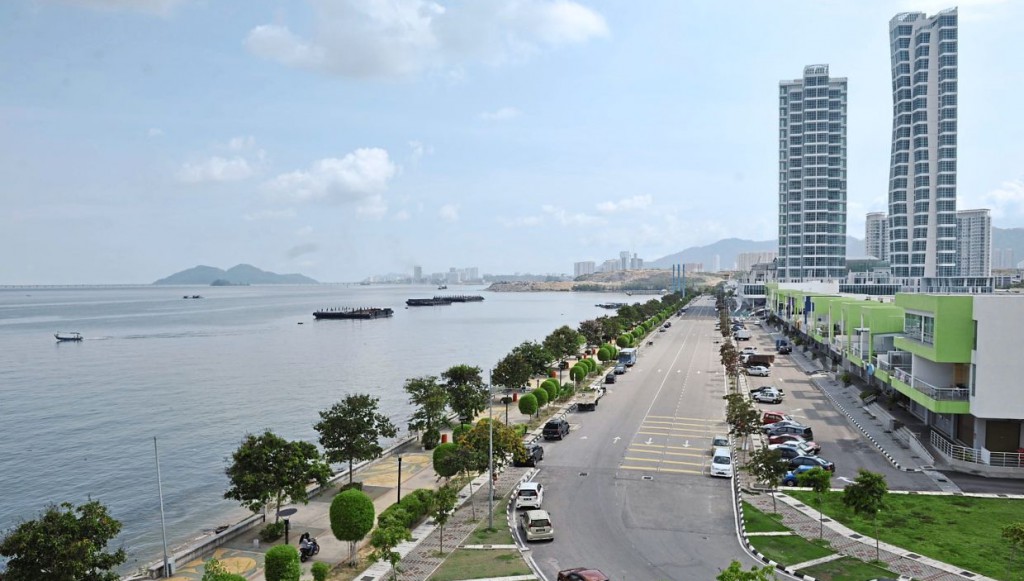Land reclamation can be a good thing

Despite the bad press and claims by non-governmental organisations that Penangites are generally against reclamation projects, many people and local businesses have benefited from such developments.
Reclamation projects have given locals a place to call home and access to important infrastructure, and businesses new opportunities that generate new economic activities.
Lee Wan Tong, 70, a long-time Pengkalan Weld resident, said the reclamation project in George Town created more land in the city to provide more homes for the people.
His village home on TOL (temporary occupancy licence) land off the Raya Merdeka Highway near the iconic floating Hean Boo Thean Kuan Yin Temple was built on land reclaimed by the state government more than 50 years ago.
“There was nothing here but rubbish until the area was reclaimed. Over 200 homes were built on the manmade land.
“When I first lived here, all the houses had no utilities. We had to get water from outside the village.
“The reclamation gave us a place to build our homes. It was certainly better than staying in a flat. Today, it is not so easy to find a Chinese village like this elsewhere in the city,” he said.
The reclaimed land where Lee’s home stands today is a stone’s throw from George Town’s earliest reclamation project, which took place in the 19th century when Penang was under colonial rule.
The British administration reclaimed Pengkalan Weld for harbour trade activities. Piers and warehouses were built there, as well as historic and heritage landmarks such as the Malayan Railway Building (now Wisma Kastam) and the famed Clan Jetties.
From the 1960s onwards, more land reclamation projects were carried out to meet urbanisation demands – altering the island’s turtle-shaped outline.
From Pengkalan Weld, reclamations have extended along the island’s eastern shoreline, all the way south to the Penang Bridge and beyond.
The reclamation along the island’s eastern shoreline, which is still ongoing today, first began in the 1990s when developer IJM built the Tun Dr Lim Chong Eu Expressway (previously known as Jelutong Expressway).
The project to create Penang Island’s sole expressway linking George Town and Bayan Lepas was undertaken by IJM in exchange for rights to reclaim the Jelutong seafront for its massive mixed development projects.
Among the projects completed by IJM over the last 20 years in the Bandar Sri Pinang development are low- and low-medium cost flats, apartments, condominiums, three-storey link houses, shop lots, light industrial lots and others, including an international school.
The development also gave Penang island one of its most vibrant seafront promenades and commercial areas – the iconic Persiaran Karpal Singh and Automall Karpal Singh Drive, which have grown into popular lifestyle attractions.
Derick Ooi Tze Wei, 41, who owns a hair salon at Automall, said Persiaran Karpal Singh was attractive because of its strategic location next to the expressway and halfway between George Town and the Penang Bridge.
Because of this, businesses at Automall also recovered quickly after the pandemic movement restrictions were lifted, he said.
“We get good crowds throughout the week, especially on weekends when there are 20% more people.
“I think being in front of the sea is a contributing factor. People like the environment. So business is good here,” he said.
Ooi said he also had reservations at the beginning when he set up his shop but when he heard Starbucks was also opening on Persiaran Karpal Singh, he was certain his decision was right.
“When we first opened in 2014, we were one of the pioneers. There were only two other shops. But within a year, boom! Others started coming,” he said.
Ooi said it was inevitable for Penang island to reclaim more land for better development in the future.
“We don’t have enough land, so that is our only option. Look at Singapore,” he said.
Leon Lee, founder of integrated property solutions consultancy Zeon Properties, whose office is also on Persiaran Karpal Singh, said reclamation projects helped spur development and stimulate economy in their respective areas.
Such projects, said Lee who is a member of the Malaysia Associated Chinese Chambers of Commerce and Industry national council, offered more than just high-end residential and commercial properties.
“The Bandar Sri Pinang project also built the Fisherman’s Wharf food court, which has given local hawkers a place to make a living for their families.
“When the Automall opened, many businesses opened their first outlets like Coffee Smith for example. If a new business becomes successful, it will expand and create more jobs.
“Look at the promenade, which has given many families a place for recreation and leisure. The promenade also hosted the New Year countdown three times in past years,” he said, pointing out how the reclamation project had benefitted many Penangites in both economic and social aspects.
Leon acknowledged that some people had prejudices against reclaimed land.
“They say reclaimed land is not real, not good, and unsafe because it is built over dumpsites. But so many countries around the world have reclaimed land to build.
“Reclamations are also not done with the purpose of destroying the earmarked sites and their surroundings. They are to bring development and generate growth for the people’s benefit,” he reiterated.
As an economy that depends on the services and manufacturing sectors, Leon said Penang must continue to develop and provide the right environment to attract investors, visitors, and talent.
“We want international investors and visitors to come. We want to attract international brands to our FIZ (free industrial zone). They are not going to come if Penang has no development.
“Even if we have land to develop in Seberang Perai, it will not be the same because the location is different and some investors may not be interested.
“Penang Island is just special because it is an island, and that is the selling point.”
Source: TheStar.com.my


Things have changed a lot from what they were a 100 years ago. Of all things that people need, FOOD is the most important. And FISH is a very important source of protein for the middle and lower income people. The Bay of Teluk Kumbar (the Penang South Reclamation area) is a very rich fish and prawn producing area. This is according to the Fisheries and Environment Departments. They both agree that the 4,500 acre reclamation project will permanently destroy the rich rish breeding grounds and have a negative effect on fish landings. The Penang State Government is in denial of this fact. Why did Exco Zairil have to bluff the public that the Bay of Teluk Kumbar is “SHALLOW MUDDY WATER”? WHY TELL THIS LIE IF IT IS NOT TRUE THAT PSR WILL DESTROY A VERY RICH SEA-FOOD PRODUCING AREA? Isn’t it HARAM to tell lies to hoodwink people?